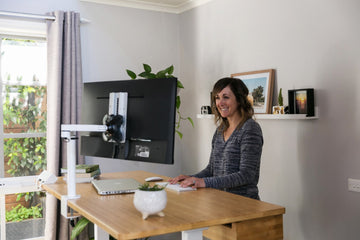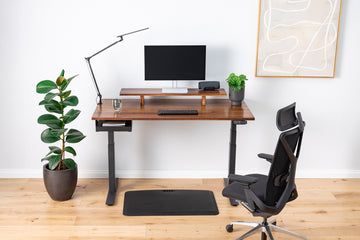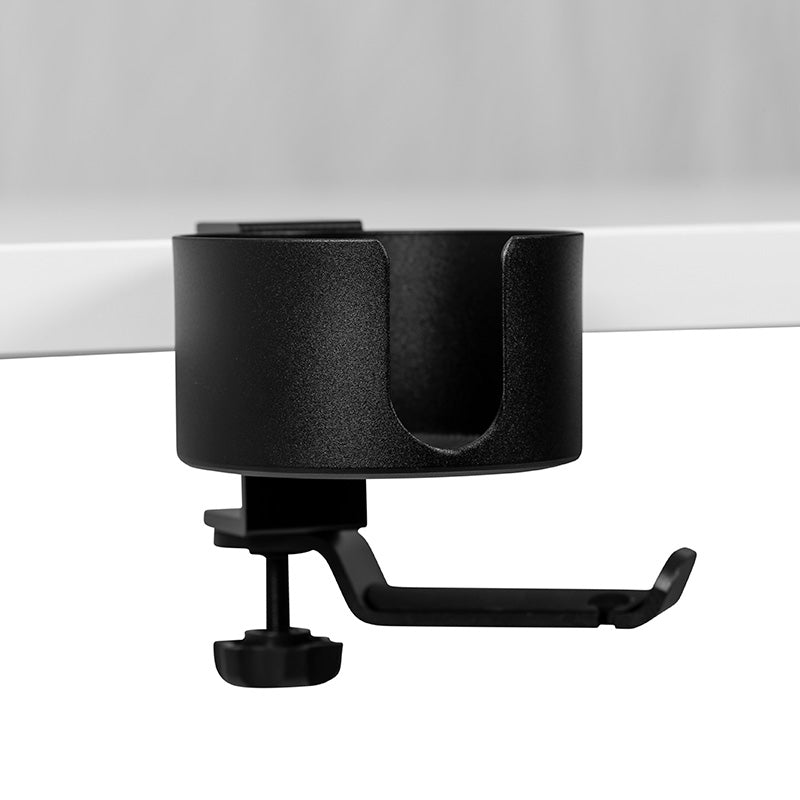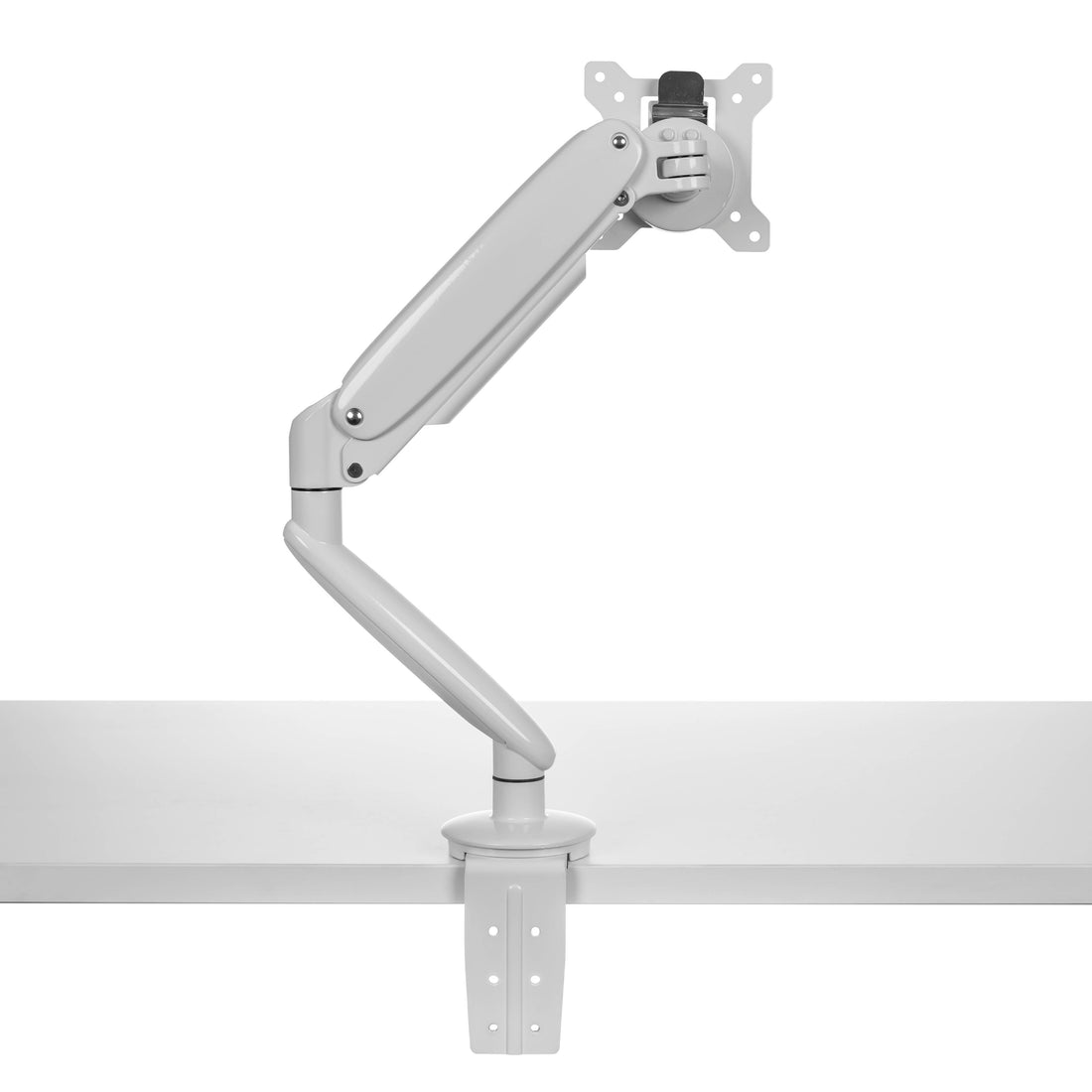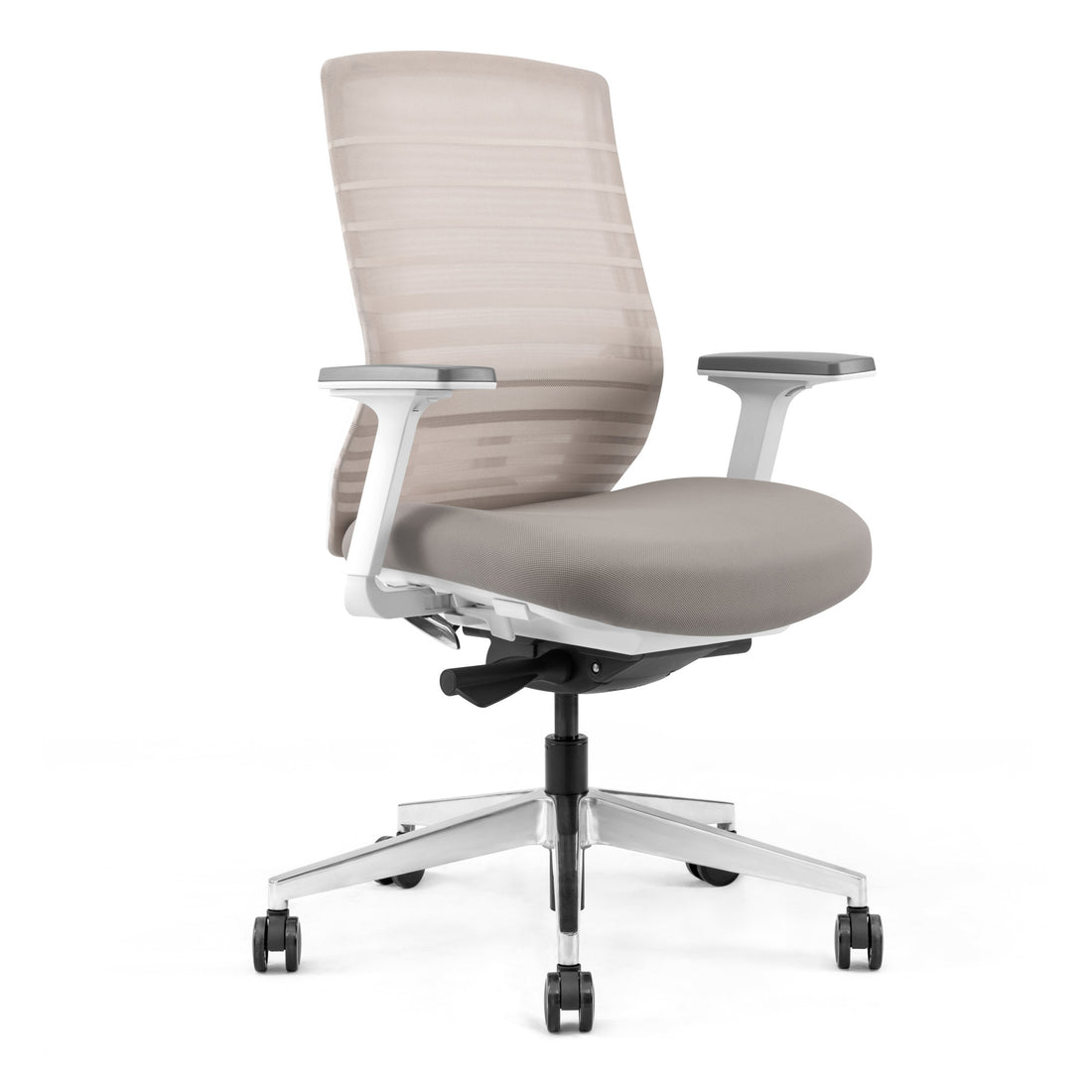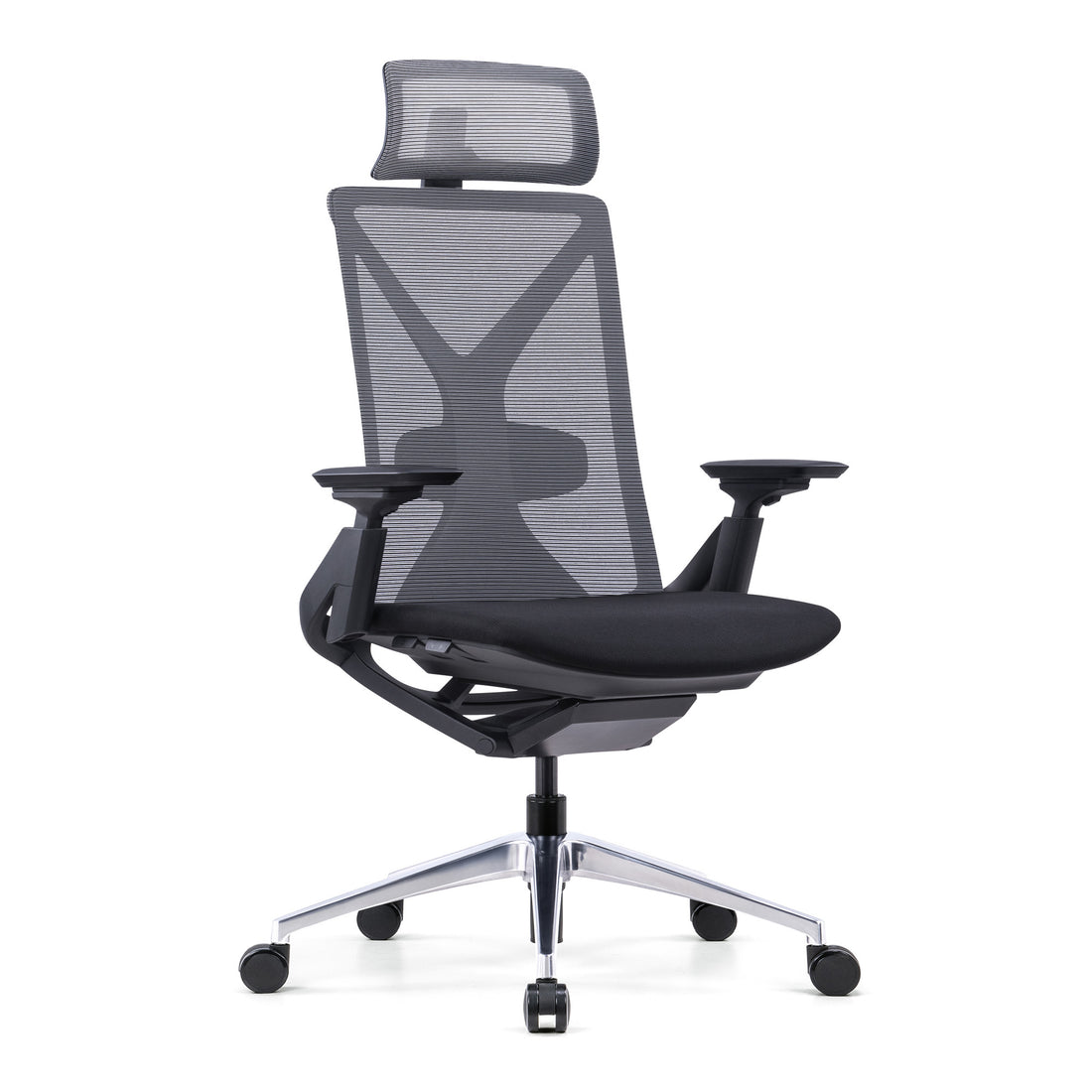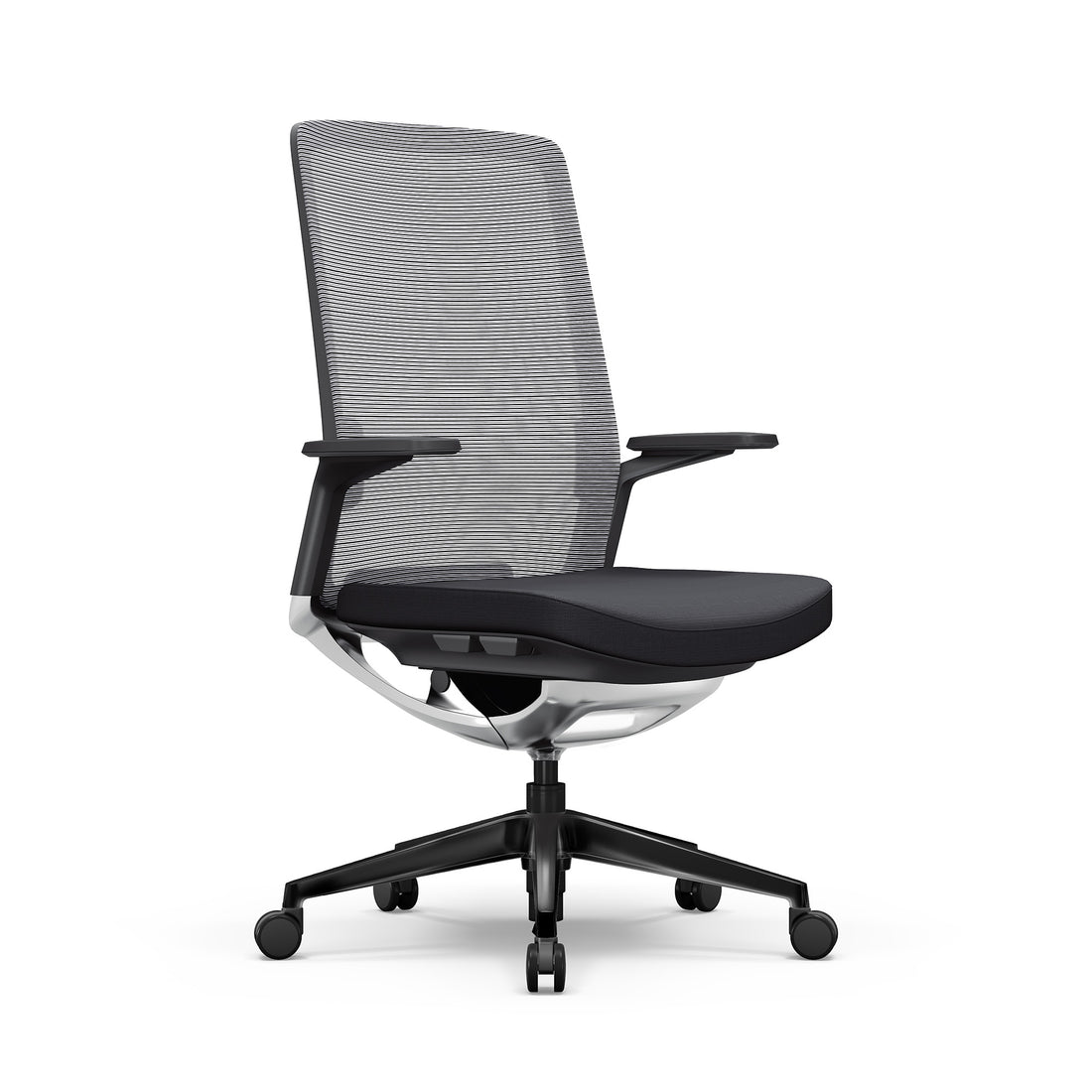It’s no secret that adjustable desks have taken the world by storm.
Thanks to their growth in popularity, there is a wealth of different options available, and the large choice and different types can be overwhelming. To help with this, we have put together the ultimate standing guest guide on everything related to standing desks.
This guide includes what to look out for when purchasing standing desks, and how to correctly use standing desks, and will answer all your questions and cover everything you need to know about standing desks.
1. Standing Desk Types
(a) Adjustable vs Fixed Standing Desk
Standing desks come as adjustable or fixed. We would personally recommend buying an adjustable one as they allow you to alternate between sitting and standing throughout your workday. Contrary to popular belief, standing all day isn’t good for you either. It’s much better to alternate between sitting and standing, which is why an adjustable standing desk is a better option.
(b) Manual vs Electric Standing Desk
Standing desks come with the option of being either electric or manual. Electric desks are slightly more expensive but are more user-friendly and convenient than manual ones.
Electric standing desks have built-in memory settings that allow you to adjust the height of your desk with the touch of a button. It remembers the correct height you need it to be. In a few seconds, your desk will be at the perfect height.
Manual desks have to be adjusted with a crank and take some time and labour to do so, which requires more effort.
(c) Standing Desk vs Workstation Converter
There’s also the option of purchasing only a workstation converter instead of a whole standing desk. Converters, also know as Desk Risers, are typically cheaper than full-blown standing desks, making them attractive options for people looking to try things out.
A workstation converter is placed on your normal desk. It turns your regular office desk into a standing desk by adding to its height.
2. Desk Set Up
(a) Maximum Desk Height
Maximum desk height is an important aspect to consider, especially if you’re tall. You need to make sure the desk is high enough for you to stand straight without having to slouch down to work, which will lead to back pain.
Standing desks for kids and standing desks for primary school students can be adapted up to student standing desk dimensions. No need to replace it. Just adjust.
A great way to see if you are using the correct height for your standing desk is to ensure that your keyboard and desk surface are both at your sitting elbow height when you are standing at your stand-up desk. When you use your desk in an ideal way, your seat height should make sure that your shoulders are relaxed and your forearms are bent at an estimated right angle.
Trust your body. Acknowledge and adjust if any unnecessary tension develops to find your perfect personal preferences.
(b) Seated Height Adjustments
Being able to adjust a seated desk height is another convenient advantage for a height-adjustable workstation but first, you’ll need to understand how to adjust your desk. Most traditional seated desks are designed with a fixed height. To meet the diverse needs of even the shortest and tallest users, you would need a height-adjustable desk.
(c) Eye Height
The general principle is that you want your eyes to be in line with the top two to three inches of your computer/laptop screen in both the seated and standing positions. For shorter users, make sure that your desk riser allows your computer screen to adjust accordingly while you’re seated to have a small adjustable desk. For the users who are too tall when standing, a possible issue would be head and neck extension so you would need a large stand-up desk.
You add 5 kilograms of extra pressure to your spine and neck for every inch that you move your chin to your chest to look down. If your chin is directly touching your chest, then you are adding about 20 kilograms of extra pressure.
If you already own a standing desk but it does not accurately meet your height requirements, then the most suitable solution would be to add a trackless keyboard tray which is ideal for standing desks that have a crossbar, as well as a monitor arm.
(d) Typing Position
When you are in both the seated and standing position, you need to ensure that you can type in an L-shape meaning that when you are typing, your keyboard needs to be below your elbow. Your keyboard and mouse should be positioned so that your elbows can maintain an angle of 90 degrees or larger. This will help prevent the possibility of overuse and strain on your wrists and fingers, which can result in repetitive strain injuries. This is considered to be the most relaxed typing position.
(e) Computer Screen Height
When looking straight ahead, you need to ensure that your eye height is looking directly at the top third part of your screen and that your computer screen is tilted slightly to a 10-20° angle. Also always be aware that each body is unique so these measurements should be taken as a guideline that would help you get started.
You should always make sure that your table height is adjusted to the one that is most comfortable for you to achieve the most convenient workspace. Having an adjustable computer screen arm would also ensure that your screen remains at the optimal standing eye height in order to have great posture.
(f) Desk Size
As soon as you have found the perfect standing desk height range, you will then need to consider the size of your work surface. This aspect will boil down to your personal preference, as well as the type of work you do. The only thing you will need to make sure of is that you have adequate room for your keyboard, mouse, and hands.
3. Weight Capacity
You need to ensure that the desk can hold all of your equipment. Most standing desks can hold anywhere from 15 to 150 kgs. We recommend you estimate how much all your things will weigh (adding a few kilos just to be safe) and make sure your desk will be able to hold that weight.

If you’re someone who just uses your desk as a home office or a study space, you may not need a desk with an incredibly high weight capacity.
To put it in perspective, the average monitor weighs around 4kg, a keyboard weighs around 890 grams, and a laptop weighs around 2.5kg. Altogether, that doesn’t even add up to 10kg. But if you want to factor in some desk accessories like plants, books, and lights, you could be placing upwards of 25kg on your desk. This is just a basic calculation of a standard office desk, not including more than one monitor or extra devices.
Different Standing Desks And Their Weight Capacities
(a) Manual Desk
A manual desk is an adjustable sit-stand desk that has a crank that you operate to adjust the height. This desk has a dynamic weight capacity of 80kg, meaning you can place up to 80kg on your desk and move it without worrying about it breaking.
This is a great desk if you want to use it for your home office or in the office as it has a high weight capacity that can hold a good amount of weight. If you’re using it at the office or even at home, it can hold a monitor, a keyboard, a laptop, and a computer, maybe some nice plants, a lamp, and a lot more desk accessories of your choosing.
One thing to note about the manual desks is that the closer you get to the max weight, the harder it may get to turn the crank as the desk gets heavier the further you extend it. However, manual standing desks are also quite a bit cheaper than electric ones, so overall it’s a great entry-level standing desk with a considerable weight capacity.
(b) Electric Desk
The most popular type of standing desk is the electric one. All you need to do to adjust the desk’s height is press a button, rather than a crank like the manual desk. Programable standing desks can come in very handy as you don’t have to worry about things falling off your desk when you manually crank the desk, as the electric desks have a smooth transition between different heights.
Most of our electric desks have a weight capacity of 150kg: a good deal more than the manual desk. This can be beneficial if the desk is being used for multiple people and purposes, ensuring that no matter how many devices, books, or clutter you put on the desk, it won’t break or damage it.
(c) Converter Desk
A converter or desk riser is a piece of equipment that you can place on your desk and move up and down like a standing desk does. All you have to do for this standing desk setup is place it on your desk and from there you can adjust the height settings, instantly transforming your desk from a sitting to a standing one.
People tend to buy converters when they want to save some money, as converters are a lot cheaper than buying a desk, or if they want to save space, they can fold the converter back down and store it away. They’re also particularly useful if you travel a lot and want to have a standing desk wherever you go.
Because converters are an addition to your desk, this means that your stationary desk can hold whatever you could place on it originally, as well as the 50 kg that the converter can hold.
So you need to take into account how much weight your existing desk can take as well as the weight allowance of the converter. A standing desk converter can clear up desk space as the converters are made to hold a monitor and keyboard, leaving your desk space for personal belongings.
4. Width
When figuring out what size standing desk you need, there are a few questions you should ask yourself.
- What is it that you want or need on your desk?
- A single serving of sushi or a laptop, mouse, and your favourite Thesaurus?
The width is probably the most practically orientated dimension, and ideally, your keyboard, mouse, and green tea would all be equal. Or at least on the same level.
Desktop converters start at a width of about 70cm, but the final answer lies somewhere between the space you have and the space you need.
UpDown Desk offers desktops in the following standard widths: 120cm, 150cm, and 180cm. Customised sizes may also be available depending on the desktop.
5. Depth
The desk need to have sufficient depth to allow you to fit on all of the equipment you want on the desk. Note if you have a laptop or or backward tilting screen you will need to allow enough depth for that. UpDown Desk's standard desk depth is 75cm which is suitable for the vast majority of circumstances. If you need a narrower or wider desk contact us to see if custom desk widths are available for your chosen desktop material.
6. Desk Assembly
Some standing desks are easy to assemble and can be done in a matter of minutes, whereas others require tools and a lot more time. Most desks will come with assembly instructions, so you can see for yourself if you’ll be able to put it together.
7. Stability
Desk stability is an important factor to consider. If you’re going to be typing away or spending a lot of time writing on the desk, it’s important to make sure that nothing is going to roll off and crash into your floor. Desk converters are usually not particularly stable, which is important to keep in mind.
8. Materials
There are a wide range of options for desktops. UpDown Desk sells a wide range of dektops. Here are just 3 examples:
(a) Bamboo

In an age where sustainability and environmentally friendly farming are becoming increasingly important, using bamboo for furniture has taken off. What you need to know about standing desks before you buy one is whether the materials used are viable in our ecologically conscious world.
Bamboo makes an excellent wood for desktops for several reasons. Firstly, it’s naturally resistant to moisture and pests. If you live in a particularly damp climate, the humidity can make your countertops and desks warp and can attract insects that will chew through your expensive furniture.
With bamboo, this is less of a concern as it will naturally repel the pests without any additional varnish or treatment.
Its ecological impact is also significantly lower than other forms of lumber. It grows quickly and it grows tall, which means that less space is needed to cultivate it. Bamboo can be grown to meet global demand in a space a fraction of the size of larger trees like oak or mahogany. It also needs less water, which is an equally large concern in sustainable farming.
Despite all of these astounding benefits, it also makes for a fantastic countertop that’s hard and resistant to scratches. You only need to buy a bamboo desktop once and it’ll last you a lifetime.
(b) Melamine

Melamine is a versatile organic carbon compound that’s used in everything from laminate flooring to camping gear. One of the perks of melamine is that it can be moulded into almost any shape, and is completely firm once it’s set.
Our melamine standing desks come in either beech or white, giving you the choice to fit however your office is styled. Beech melamine brings lightness and natural tones to a space, whereas white is clean and chic.
Melamine is relatively heat and scratch-resistant, but the laminate covering needs to be cared for. If moisture is left to sit on the surface, it can cause bubbles and warping, so it’s best to wipe down any spills as soon as you can to keep your desk in top-notch condition.
Our melamine tables are built with precise measurements and specifications, so they’re exceptionally sturdy.
(c) Acacia

There are over 1,000 species of acacia (wattle) across the continent, more than even eucalyptus. Aboriginal and Torres Strait Islander people used the seeds, sap, and wood of the acacia as a way of life, and we’re happy to do the same.
All the acacia in our products come from FSC (Forest Stewardship Council) certified to ensure you get a product that’s not only good for you but good for the planet.
It also means that you can rest assured about ethical labour practices, as all our forestry partners prioritize sustainable employment with a focus on worker safety and community upliftment.
We incorporate a designed-for-environment approach (DFE) in our supply chain, which means that every stage of the process, from forestry to shipping, is carefully thought out in terms of its carbon footprint.
90% of the packaging is made from recyclable cardboard, so there’s little excess waste. We’re also proud of the 100% tree-extract finish used on these surfaces. This means that every part of the tree is used, so no extra trees are being felled to finish the product.
It’s more than just sustainable, too. Acacia is a beautiful wood with a range of caramel colours, from straw gold to dark brown. It’s a little softer than materials like bamboo or melamine, so you need to be careful of scratches or dents.
(d) Messmate

Messmate is an indigenous lumber from eucalyptus growing in Southeast Australia. It has beautiful, deep grains and natural knotting that make any desktop stand out as a centrepiece in your home or office.
We offer Australian-made standing desktops of either recycled or brand new messmate, with both options being sustainable and environmentally friendly. There are two finishes in the recycled messmate to chose from: dark recycled messmate and a lighter coloured natural recycled messmate. Our partners are FSC and PEFC certified, ensuring a transparent supply chain and ethical production.
9. Price
It is likely that when you’re searching for a standing desk you have a budget in mind. This is especially true when you consider that standing desks are so expensive. Since standing desks are usually a bit more pricey, people tend to keep a lookout for cheap standing desks in the hopes that they’ll get a good deal.
Always remember, you get what you pay for. If you’re buying a cheaper product, odds are the manufacturer cut corners during the building process. We recommend making a list of all the important qualities you want in a standing desk and finding one that ticks those boxes.
10. Tips And Tricks To Increase Productivity And Comfort While Using A Standing Desk
The following standing desk hacks will make using a standing desk easier and more enjoyable, and will likely increase your productivity at work.
(a) Use An Anti-Fatigue Mat
Anti-fatigue mats are a game-changer when it comes to standing desks, and one of the top hacks we have to offer. These mats cushion your feet and encourage movement in the lower leg muscles as you stand. Not only do they help to strengthen your core and calves, but they also place less strain on your footbridges, ankles, knees, and hips. They make the experience of a standing desk a lot more pleasurable and comfortable.
(b) Make A Standing And Sitting Schedule
It’s not recommended to spend your entire day standing. Make a standing and sitting schedule to remind yourself to alternate between the two. While there’s not a set ratio of sitting and standing that you should follow, some research has suggested that for every 1 to 2 hours that spend sitting, you should stand for one hour.
However, if you are new to a standing desk, we recommend that you ease into it in smaller intervals until you can build up to an hour of standing so that you can adjust to your new standing desk.
(c) Set A Reminder On Your Phone To Take Breaks
As we mentioned, it is not great to stand the entire time, and we recommend creating a sitting and standing schedule. To make sure you stick to this schedule and don’t get too caught up and distracted by work, we recommend setting reminders on your phone to alternate between the two.
(d) Make Use Of The Memory Settings If You Have A Motorised Standing Desk
If you have an electric standing desk, it will most probably have height memory settings. A tip is to make use of these settings, as this will help you switch between sitting and the correct standing height in a few seconds.
(e) Make Sure Your Standing Desk Is Stable
As we mentioned earlier, stability is an important factor when looking for a standing desk. Unfortunately, some standing desks are lacking in this department.
This comes largely down to the desk’s structure, and knowing the details of how standing desks are made will help you pick out the right one for you.
A tip that we have is to look for a desk that has been built with a sturdy and solid base. This will provide stability and prevent wobbling from occurring. Desks made with a thicker top and feet, and have cross support also tend to be more stable.
If you have ensured the above, and your desk is still wobbling, make sure that the surface that it's on is flat, or put a wedge under the foot that is causing the wobble.
(f) Use A Lacrosse Ball
Using a lacrosse ball to roll the soles of your feet on will help to release and relax the tissues in your feet that get tight after standing for a long time. When these tissues get too tight, it can cause muscle pains, which will make you not want to use your standing desk anymore. This eliminates all of the benefits that you could be getting from your new piece of furniture.
(g) Wear Comfortable Shoes That Are Similar Heights
One of our greatest hacks is to make sure the shoes you wear are comfortable and of a similar height. If you use high heels one day, and sandals the next, this will affect the height that your desk needs to be. This will cause you to waste time trying to find the correct height every day.
Comfortable shoes are also important as they will prevent foot pain, make your experience with a standing desk much more comfortable, and make your work more productive.
(h) If The Standing Desk Is For One Person

- You have to sit comfortably with your feet flat on the floor, your upper arms resting at your sides and your elbows bent as though you are typing on your keyboard.
- You then have to stand up and take the measurements.
- Next, you will have to choose a desk that can adjust at least as low as your sitting elbow height and at least as high as your standing elbow height.
- For shorter users, if you are unable to find a table that adjusts low enough, you might have to add a footrest or an adjustable-height keyboard tray to your workspace.
- Lastly, you will also need to think about adding casters (wheeled devices) to your table as this will create a flexible work environment, and make sure that you keep the caster height in mind when deciding on your final standing table height range.
(i) If The Standing Desk Is For Two Or More People

- You should follow the same instructions described above, but make sure you do it for each user, or at least for the shortest and tallest users.
- You will then have to choose a desk that adjusts as low as the shortest sitting elbow height and as high as the tallest standing elbow height.
- Lastly, if you are unable to make accommodations for a shorter user, you will need to think about adding a footrest or an adjustable-height keyboard tray to the workspace.
11. Standing Desks FAQs
(a) Is A Kneeling Chair Or Standing Desk Better?
There’s an ongoing debate regarding the use of a kneeling chair vs standing desk, and which is better. Both of them have benefits and are actually best when used in unison. We recommend using an adjustable standing desk, and for the periods when you are sitting, use a kneeling chair. That way, you get the benefits of both, and the ergonomic benefits are not lost when sitting.
(b) What Are The Benefits Of Standing Desks?
Some of the benefits provided by standing desks are that they promote calorie burning, which lowers the chance of obesity, and they improve overall mood, energy levels, and productivity. They can also decrease back and shoulder pain, prevent heart disease, and may possibly lower blood sugar.
(c) Are Standing Desks Worth The Expense?
Standing desks are definitely worth the cost. They have so many benefits that you’d be a fool to pass up on. A lot of people also wonder if standing desks are tax-deductible, and if you buy them for work, the answer is yes. Which makes them even more worthwhile.
(d) Do Standing Desks Last Long?
Most standing desks are built with high-quality materials, provided that you don’t go for one that is too cheap. How long a standing desk lasts depends on the quality of the build, but also on how well you take care of it.
Final Thoughts
As you can see, there are a few things that need to be taken into consideration before, and after, purchasing a standing desk. You should spend some time researching the factors that are important to you before purchasing one and taking the time to set up the desk correctly once it’s arrived at your home or office. Doing this, and following our tips and tricks, will help you to get maximum benefits out of your standing desk.

